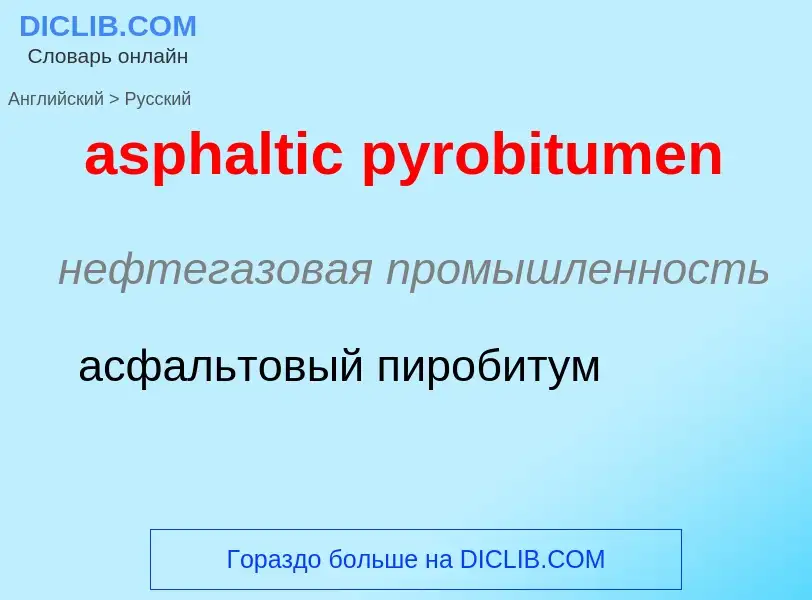Translation and analysis of words by ChatGPT artificial intelligence
On this page you can get a detailed analysis of a word or phrase, produced by the best artificial intelligence technology to date:
- how the word is used
- frequency of use
- it is used more often in oral or written speech
- word translation options
- usage examples (several phrases with translation)
- etymology
asphaltic pyrobitumen - translation to russian
нефтегазовая промышленность
асфальтовый пиробитум
нефтегазовая промышленность
пиробитум
асфальтит, асфальтен
Смотрите также
['ded'si:]
география
Мёртвое море
существительное
общая лексика
Мертвое море
Wikipedia

The Dead Sea (Hebrew: יַם הַמֶּלַח, Yam hamMelaḥ; Arabic: اَلْبَحْرُ الْمَيْتُ, Āl-Baḥrū l-Maytū), also known by other names, is a salt lake bordered by Jordan to the east and the West Bank and Israel to the west. It lies in the Jordan Rift Valley, and its main tributary is the Jordan River.
As of 2019, the lake's surface is 430.5 metres (1,412 ft) below sea level, making its shores the lowest land-based elevation on Earth. It is 304 m (997 ft) deep, the deepest hypersaline lake in the world. With a salinity of 342 g/kg, or 34.2% (in 2011), it is one of the world's saltiest bodies of water – 9.6 times as salty as the ocean – and has a density of 1.24 kg/litre, which makes swimming similar to floating. This salinity makes for a harsh environment in which plants and animals cannot flourish, hence its name. The Dead Sea's main, northern basin is 50 kilometres (31 mi) long and 15 kilometres (9 mi) wide at its widest point.
The Dead Sea has attracted visitors from around the Mediterranean Basin for thousands of years. It was one of the world's first health resorts (for Herod the Great), and it has been the supplier of a wide variety of products, from asphalt for Egyptian mummification to potash for fertilisers. Today, tourists visit the sea on its Israeli, Jordanian and West Bank coastlines. The Palestinian tourism industry has been met with setbacks in developing along the West Bank coast.
The Dead Sea is receding at a swift rate; its surface area today is 605 km2 (234 sq mi), having been 1,050 km2 (410 sq mi) in 1930. Multiple canal and pipeline proposals, such as the scrapped Red Sea–Dead Sea Water Conveyance project, have been made to reduce its recession.



![Satellite photograph]] showing the location of the Dead Sea east of the Mediterranean Sea Satellite photograph]] showing the location of the Dead Sea east of the Mediterranean Sea](https://commons.wikimedia.org/wiki/Special:FilePath/Dead Sea Galilee.jpg?width=200)
![Halite deposits (and [[teepee structure]]) along the western Dead Sea coast Halite deposits (and [[teepee structure]]) along the western Dead Sea coast](https://commons.wikimedia.org/wiki/Special:FilePath/Dead Sea Halite View 031712.jpg?width=200)
![Dead Sea in the morning, seen from [[Masada]] Dead Sea in the morning, seen from [[Masada]]](https://commons.wikimedia.org/wiki/Special:FilePath/Dead Sea Sunrise.jpg?width=200)

![[[Ein Bokek]], a resort on the Israeli shore [[Ein Bokek]], a resort on the Israeli shore](https://commons.wikimedia.org/wiki/Special:FilePath/Ein Bokek - Dead Sea2.jpg?width=200)
 p507 SKETCH OF THE BACKWATER AT THE SOUTH END OF THE DEAD SEA.jpg?width=200)
![Kempinski Hotel, one of the many hotels on the [[Jordan]]ian shore Kempinski Hotel, one of the many hotels on the [[Jordan]]ian shore](https://commons.wikimedia.org/wiki/Special:FilePath/Kempinski Hotel Ishtar - Dead Sea - Jordan.jpg?width=200)
![A cargo boat on the Dead Sea as seen on the [[Madaba Map]], from the 6th century AD A cargo boat on the Dead Sea as seen on the [[Madaba Map]], from the 6th century AD](https://commons.wikimedia.org/wiki/Special:FilePath/Madaba BW 9 THERMA KALLIROIS highlighted.jpg?width=200)
![halite]] like the rest of the mountain) halite]] like the rest of the mountain)](https://commons.wikimedia.org/wiki/Special:FilePath/MountSodom061607.jpg?width=200)
![The proposed [[Red Sea–Dead Sea Water Conveyance]]. The proposed [[Red Sea–Dead Sea Water Conveyance]].](https://commons.wikimedia.org/wiki/Special:FilePath/Red Sea - Dead Sea Canal map.jpg?width=200)

![World's lowest (dry) point, [[Jordan]], 1971 World's lowest (dry) point, [[Jordan]], 1971](https://commons.wikimedia.org/wiki/Special:FilePath/World's lowest point (1971).jpg?width=200)


